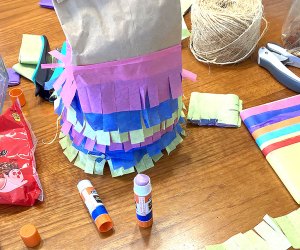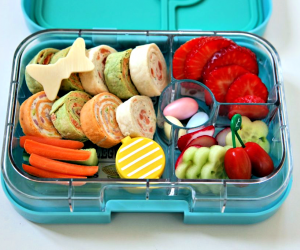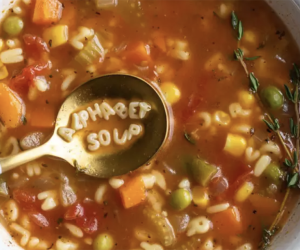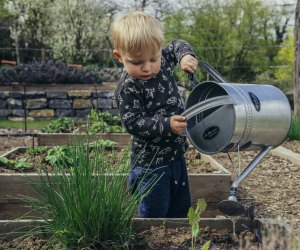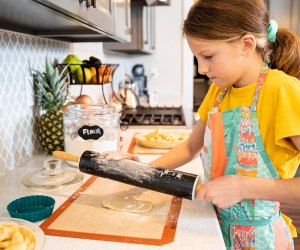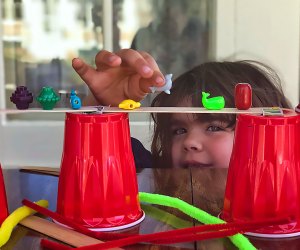Family Dinners: Supper Swaps and Recipes for Making Good Use of Your CSA or Farmer's Market Bounty
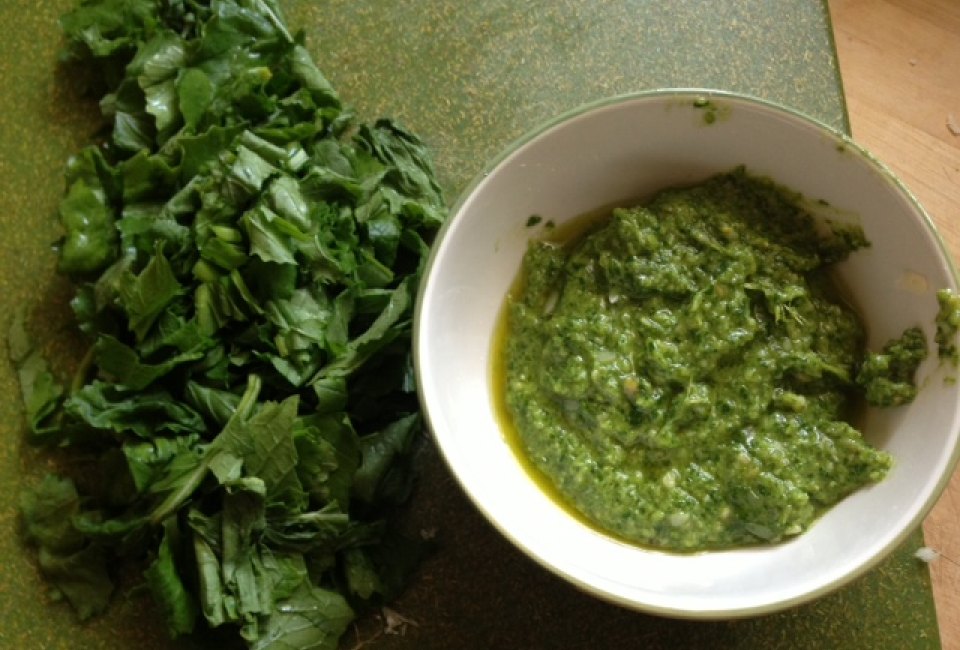
Sometime last summer, I was walking in our neighborhood in Roslindale and ran into my friend and neighbor Meg. I must have looked as exhausted as I felt. “Um, can I bring you dinner some night?” she asked. I said yes, of course, but was blown away by her offer. Apart from a life-saving casserole a friend brought over when our daughter was born and the occasional pot-luck contribution, I was relatively unfamiliar with the experience of food as a gift, of sustenance and time. But it is. Meg’s chicken piccata and pasta were amazing, like take-out, only better. My husband and I enjoyed a much needed break from cooking (and cleaning) and some much needed time together.
I wanted to return the favor. And so our supper swap was born. What if we took turns making dinner for each other? Every other week? Every week? We spun our plan into action. We doubled recipes, and on our appointed days, walked over casserole dishes of mac and cheese, chicken and biscuits, tomato soup. Our kids got used to “dropping off dinner.” It became, you know, a thing. Here's how to set up your own supper swap and make good use of some of this summer's farmer's market bounty.
OUR LATEST VIDEOS
Both Meg and I are busy people; I’m a high school English teacher and Meg is a crafter, specializing in handmade goods and events services in Boston. We both have little kids who are active enough to leave us with not so very much time for cooking or meal planning. So we save elaborate meals for special occasions, when we might have more help on hand. We don’t eat from-scratch meals every night, but most nights, we do.
Why you should do it:
- Supper swaps are cheaper than take out. Put the extra money into a savings account for a rainy day or a special trip.
- Supper swaps are healthier; you’ll wind up cooking with more whole foods and fewer processed ones.
- Supper swaps build communities. You’ll gain a partner in meal planning, but also a friend.
- Supper swaps are sustainable. Instead of buying packaged ready-made meals, you’ll get to use your Tupperware. A lot.
- Supper swaps will expose your child to different foods. I like to cook, and I’m pretty good at it, but I don’t always think outside of my repertoire. We discovered that our daughter likes snap peas and cooked carrots. (Ok. Honestly, she mostly eats fruit and yogurt and cheese. But we’re trying, right?)
Tips for getting started:
- Find a buddy with whom you'll be compatible, food-wise. Ask about any special dietary preferences or allergies.
- Set reasonable expectations for yourself. The goal is to save time and money, not to create more stress.
- Keep the lines of communication open with your supper swappee. No need to endure something you don't enjoy eating.
- Be flexible. Allow for the possibility that sometimes, things might not work out. If you're sick or your child is sick or it's just been 'one of those weeks', you might not want to cook.
Seasonal Recipes:
Because it’s CSA and farmer’s market season, we’re in the thick of what I’ve heard called “greens management.” It can be a little overwhelming unpacking all those greens. Here are a few of our favorite summer recipes, with variations to help you make good (and quick) use of your CSA. Recipes here serve 6-8 (perfect for sharing with another family).
Arugula and Endive Pesto
Ingredients:
1 package whole-wheat pasta
1 cup shredded parmesan cheese
½ cup toasted pine nuts
2 bunches baby arugula, shredded
1 bunch endive, shredded
¼ cup olive oil
2 cloves garlic
Salt and pepper to taste
Optional add-ins:
Apple and chicken sausage, cooked
cooked chard or broccoli rabe (flash boiled for 1 min, since it will continue to cook in the warm pasta).
mashed cherry tomatoes
Directions:
Boil and salt water for pasta. Add pasta and cook using the directions on the box. While the pasta is cooking, blend the rest of the ingredients together in a food processor until pesto is a beatific green color.
Drain pasta, reserving 2 tablespoons of pasta cooking water. Add pesto, and reserved water and stir until creamy. Add any other optional ingredients and cook for 2-4 minutes longer on low. If adding chard, it should still be a bright green color.
(Adapted from Deb Perlemen at Smitten Kitchen)
Ingredients:
1 pound Swiss chard (can also swap kale, spinach or another green), ribs and stems removed and cleaned, coarsely chopped
3 tablespoons olive oil
1 cup (5 1/4 ounces) chopped carrots
1 cup (5 ounces) chopped celery
1 cup (4 1/4 ounces) chopped shallots, about 4 medium
2 garlic cloves, finely chopped
1 cup dry white wine
2 15-ounce cans (or about 3 3/4 cups) white beans, drained and rinsed
2 cups (or more to taste) vegetable broth
1 cup pureed tomatoes (from a can/carton/your jarred summer supply)
Salt and freshly ground black pepper
3 fresh thyme sprigs
1 bay leaf
1 tablespoon sherry vinegar
Directions:
Bring medium pot of salted water to boil. Cook chard (or any heavier green; no need to precook baby spinach) for one minute, then drain and squeeze out as much extra water as possible.
Heat olive oil over medium in a large pot. Add carrots, celery, shallots and garlic and saute for 15 minutes. Add wine (scraping up any bits that have stuck to the pot) and cook it until it reduced by three-fourths. Add beans, broth, tomatoes, a few pinches of salt, freshly ground black pepper, thyme and bay leaf and bring to a boil. Reduce heat to medium-low and simmer for 20 minutes. Add chard and cook for 5 minutes more. Remove thyme and bay leaf. Add more broth if you’d like a thinner stew and adjust salt and pepper to taste.
Serve as is drizzled with sherry vinegar, with toasted baguette.
Photo by author: Arugula pesto and broccoli rabe.





















































